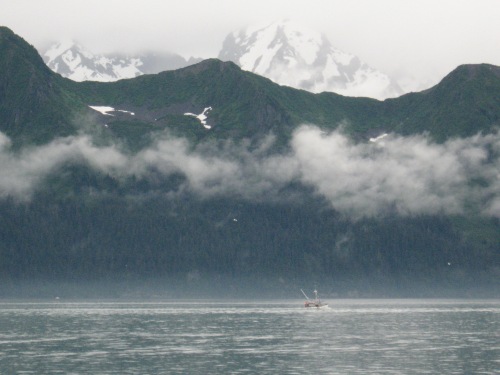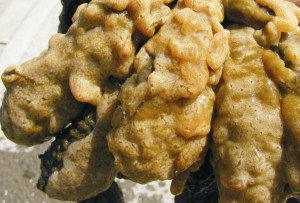Note: The following story was reported and written in 2007, for The Hartford Courant. Editors there declined to run it. I like the story anyway, and pretty much everything it says has been repeatedly validated by subsequent scientific research. It’s still going on – even in Connecticut. I’ve added a couple of notes in brackets in the text where updates seemed appropriate. — DF
SEWARD, Alaska — The Glacier Express chugged out of Resurrection Bay, and the blowing rain turned to sleet that lashed across the upper deck. White clouds shrouded the dark gray mountains that drop steeply into the sea.
This had been one of Alaska’s coldest and wettest summers. As they headed toward Kenai Fjords National Park, passengers aboard the sightseeing boat, some wrapped in fleece and rain gear in mid-August, had good reason to wonder what had happened to global warming.
But Alaska, frontierland of huge landscapes and volatile weather, is indeed warming. In the past 50 years, the state’s annual average temperature is up as much as 5.5 degrees. Overall, the Arctic region has warmed almost twice as fast as the rest of the world.
The greenhouse gas problem fueled by our crowded and busy civilization affects this remote region now, directly and in many ways — including fading sea ice, melting glaciers, thawing permafrost and changes in habitats that have been the same for thousands of years.
But this is not Alaska’s problem alone. The effects of warming in Alaska and the rest of the Arctic will reverberate all over the globe.
Even in Connecticut.








 MICROSCOPIC SHELLS SHED BY SINGLE-CELLED CREATURES LIE DEEP WITHIN THE ESTUARY’S SEDIMENT, AND RESEARCHERS BELIEVE THEY HAVE A LOT TO TELL US ABOUT CLIMATE CHANGE.
MICROSCOPIC SHELLS SHED BY SINGLE-CELLED CREATURES LIE DEEP WITHIN THE ESTUARY’S SEDIMENT, AND RESEARCHERS BELIEVE THEY HAVE A LOT TO TELL US ABOUT CLIMATE CHANGE.
